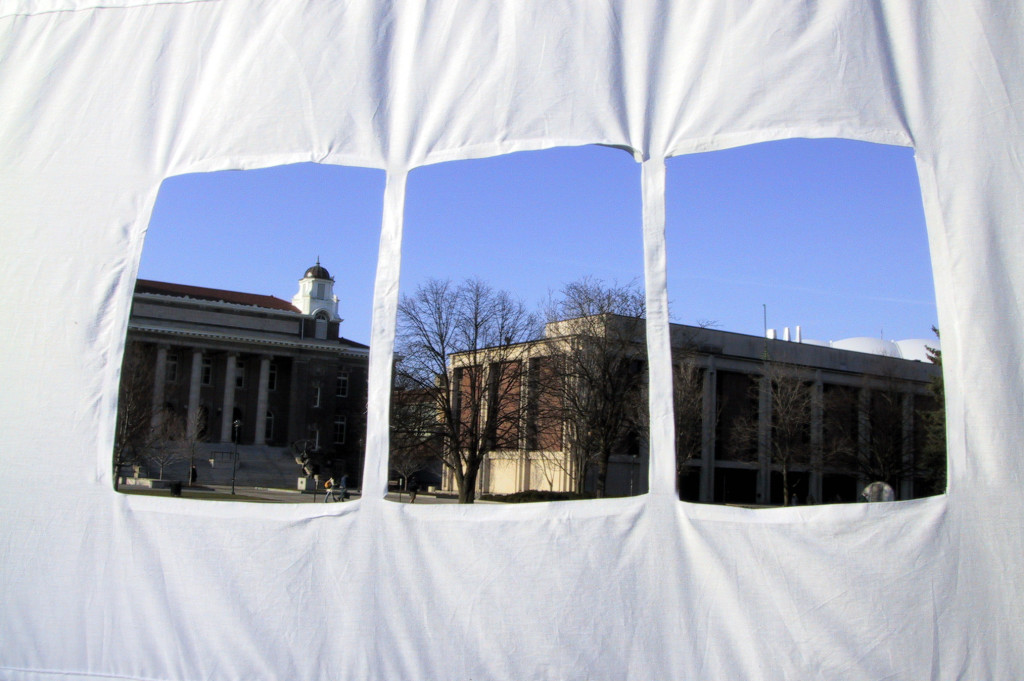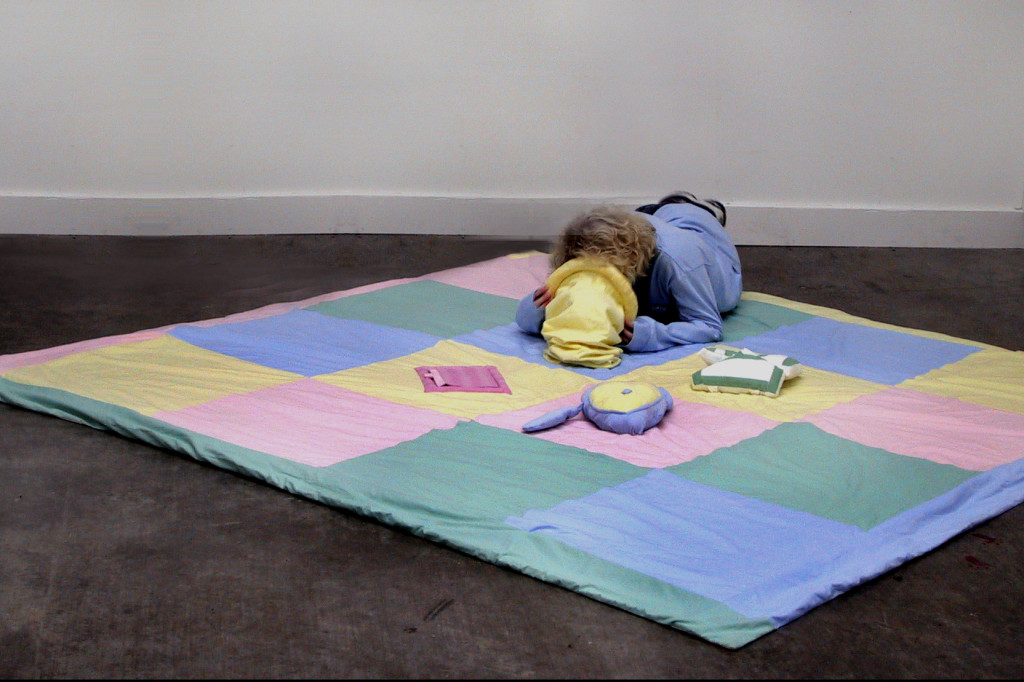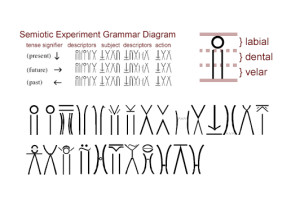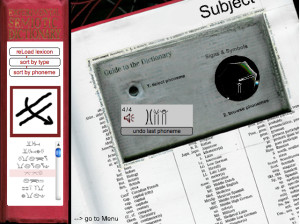“Identity theft” is one of the most popular memes of the day. It is a sad phrase; one that strips our cultural understanding of identity down to a handful of information. Our individual identities are reduced to a couple of facts: name, date of birth, ethnicity, address, phone number, social security number, credit history and email address. This information is meant to locate us literally and statistically; it is not meant to “know us” personally.
The purpose of Self-Disclosed is to explore our relationship with this so-called “personal” information. Today this “personal” information is a medium of exchanged used to gain access to data, email, information, coupons, friends/chat online, etc. Because we don’t think of this information as currency, we don’t keep systematic records of where/who we have “paid.”
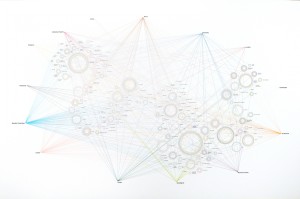
Mounted print (2009) maps my identity over a period of two years. The map is constructed to demonstrate relationships various organizations have with my identity data and to create an object that provokes conversation.
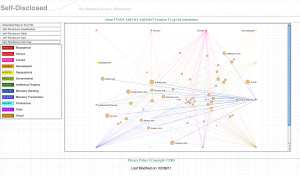
Screenshot of data visualization software (2011).
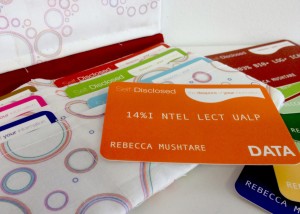
Trading Cards and Wallet (2013). The Self-Disclosed tote, wallet and cards are portable maps of my own information exchanges that provide points of entry into the conversation about identity theft and information spending. These particular items provide the opportunity for in-person person-person interactions.
Note: the key/legend is available on the back of each trading card.

Tote (2012).


